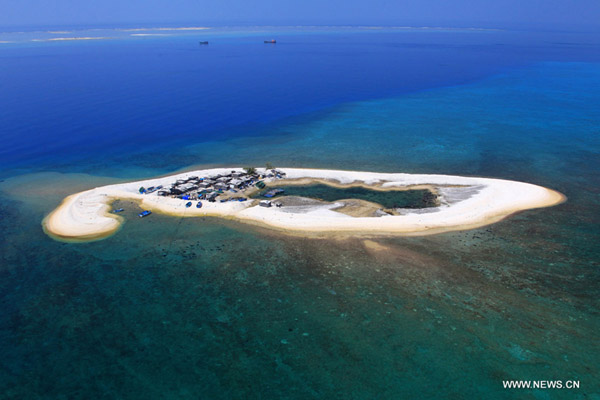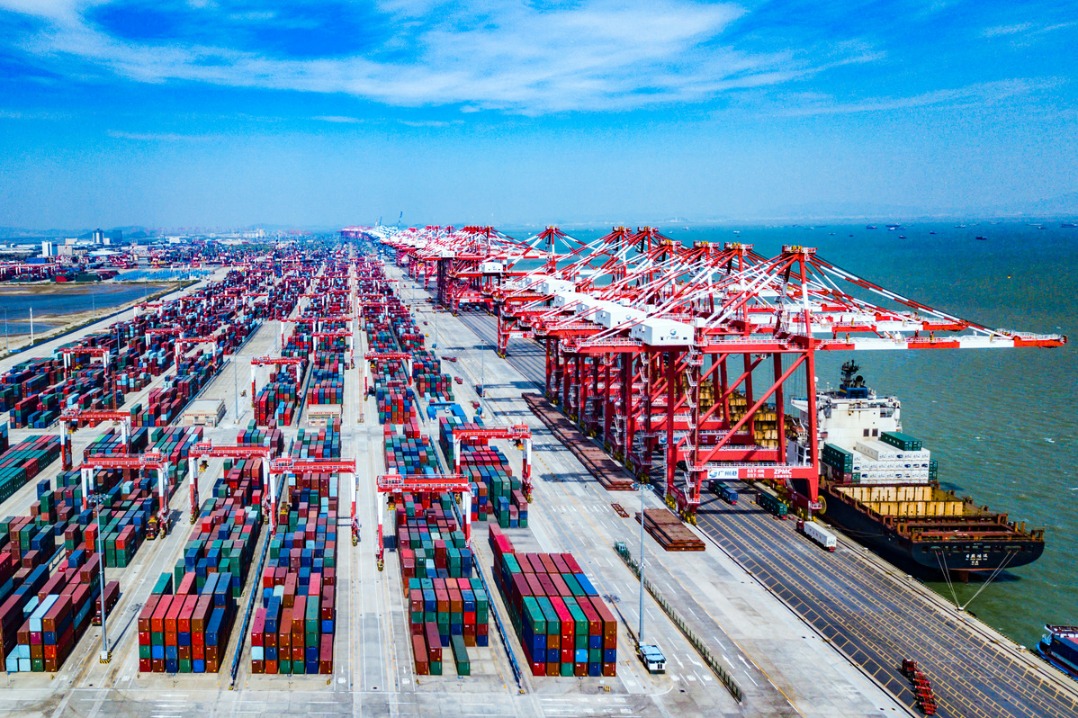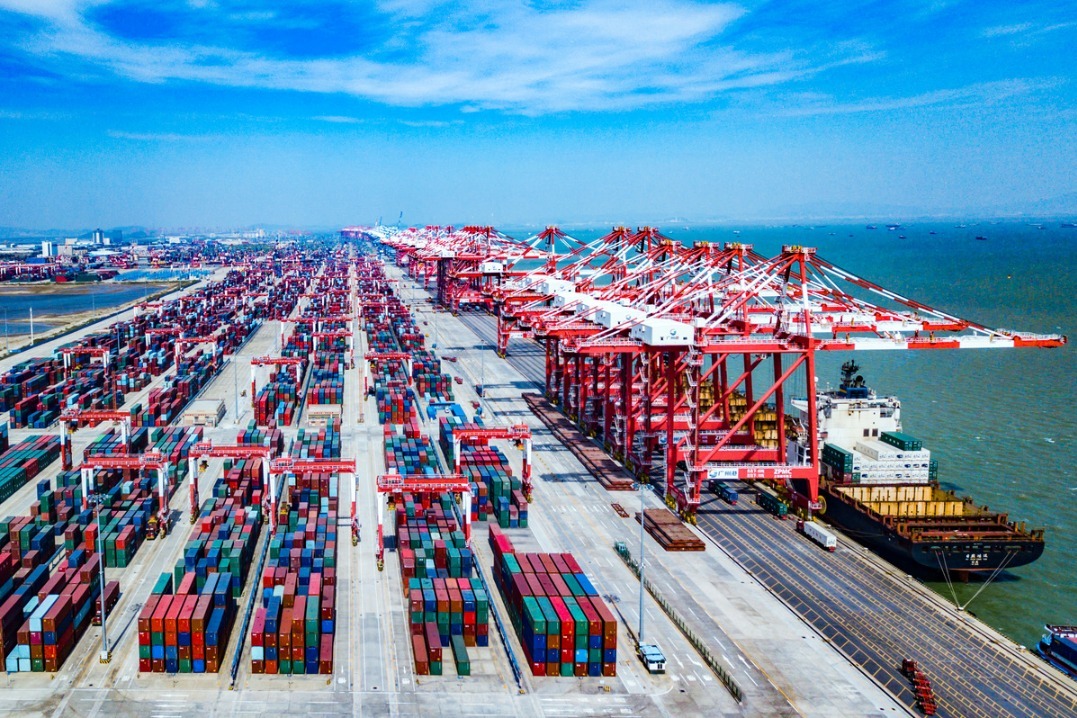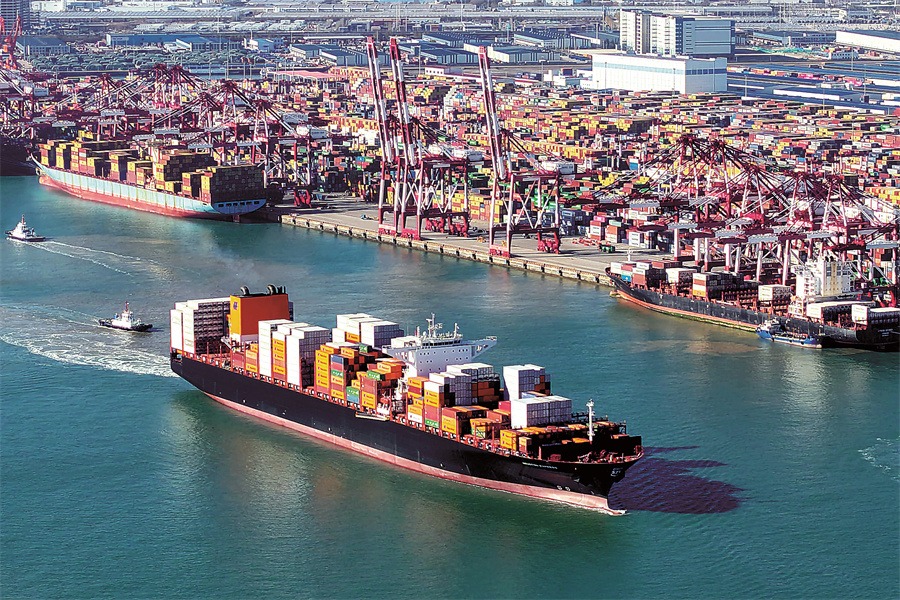Analyzing the illegality and invalidity of the South China Sea Arbitration Awards via six 'whys'
Keynote Speech at the Symposium on "South China Sea Arbitration Awards and International Law"


Keynote Speech at the Symposium on "South China Sea Arbitration Awards and International Law"
The South China Sea Arbitration unilaterally initiated by the Philippines in 2013 marked the first international legal case filed against China since the founding of the People's Republic of China. It essentially amounted to a political charade masquerading as a legal process. The arbitral tribunal acted ultra vires and contravened the law, rendering the so-called awards null and void, devoid of any binding effect. The Chinese government neither accepts nor participates in the arbitration, nor does it accept or recognize the so-called awards. Following the issuance of the awards, China responded with a range of comprehensive measures, including political, legal, and diplomatic actions, maritime operations, and public outreach, effectively exposing the illegal conducts of the arbitral tribunal. At present, the situation in the South China Sea remains generally stable and manageable. However, the United States and the Philippines persisted in hyping the alleged validity of the awards, with the Philippines even using them as a purported legal justification for its frequent maritime incursions and provocations against China. To address this misinformation effectively, it is crucial to thoroughly investigate and methodically expose the fallacies of the awards from an international law standpoint. Today, my main objective is to analyze the illegality and invalidity of the awards by employing a structured approach involving six "whys."
I. Why is it argued that the arbitral tribunal acted ultra vires?
The United Nations Convention on the Law of the Sea ("the Convention") stipulates that the arbitral tribunal's jurisdiction is confined to "any dispute concerning the interpretation or application of this Convention" (Article 288, paragraph 1). This provision includes two important elements: first, it confirms that the tribunal's jurisdiction covers disputes related to those "concerning the interpretation or application of the Convention." Second, it excludes the tribunal's jurisdiction over disputes other than those "concerning the interpretation or application of the Convention," particularly those involving general international law, such as customary international law. This includes disputes concerning territorial sovereignty, historic rights, and the status of continental States' outlying archipelagos, which fall beyond the tribunal's jurisdiction.
Firstly, the arbitral tribunal exceeded its jurisdiction ratione materiae by arrogating to itself jurisdiction over disputes concerning territorial sovereignty, which are not regulated by the Convention. The 2015 "Chagos Marine Protection Area Arbitration" award explicitly stated that territorial sovereignty issues fall outside the scope of interpretation or application of the Convention. In the South China Sea Arbitration, all claims raised by the Philippines--including those regarding historic rights (Submissions No.1 and 2), the status of islands and their maritime rights (Submissions No.3 to 7), and the legality of China's activities (Submissions No.8 to 14), are contingent upon the determination of territorial sovereignty over maritime features or have significant implications for territorial sovereignty. These submissions essentially revolve around disputes over territorial sovereignty concerning certain maritime features in the South China Sea.
Secondly, the arbitral tribunal exercised jurisdiction over maritime delimitation disputes that China had explicitly declared to be excluded from the compulsory procedures. Article 298 of the Convention allows States Parties to declare their non-acceptance of compulsory dispute settlement procedures regarding "disputes concerning sea boundary delimitation." In 2006, China specifically excluded this category of disputes from compulsory dispute settlement procedures in accordance with the Convention. "Disputes concerning sea boundary delimitation" include issues such as the status of related maritime features, the maritime zones resulting from these maritime features, and the resultant overlapping maritime claims - all of which fall within the scope of China's declaration. As Chris Whomersley, former Deputy Legal Adviser in the United Kingdom's Foreign & Commonwealth Office, states, "The status of a feature will have 'a bearing on' any delimitation. To take a concrete example, if there are two States which have opposite coasts, but there is a small feature belonging to one of them lying midway between the coasts, then any dispute about the status of that feature ...would thus be covered by Article 298(1)(a)(i).... And of course such a dispute is excluded from the Tribunal's jurisdiction as a result of China's declaration."
However, the arbitral tribunal employed a "two-step" legal acrobatics: firstly, during the jurisdictional stage, it asserted that maritime delimitation solely involves delineating the maritime boundary line itself, excluding the determination of the status of maritime features. As the status of maritime features wasn't among the excluded matters, the tribunal deemed it permissible to address them separately. Secondly, during the substantive stage, the arbitral tribunal determined that none of the maritime features in the Nansha Qundao could generate an exclusive economic zone or continental shelf, thus eliminating any overlapping maritime claims or delimitation issues between China and the Philippines. The arbitral tribunal held that "there is no situation of overlapping entitlements that would call for the application of Articles 15, 74, or 83 to delimit the overlap." However, in fact, the arbitral tribunal did deal with maritime delimitation disputes that were excluded by China's declaration. Otherwise, how could it conclude that there is no situation of overlapping entitlements requiring delimitation?
Thirdly, the arbitral tribunal infringed upon the Parties' right to settle a dispute through peaceful means of their own choice. By its strained interpretation of Article 281, where it limited the term "agreed" to mean "legally binding agreement" and "exclude" to mean "expressly exclude," the arbitral tribunal had arbitrarily mangled the language of the provision, with the peculiar effect that the commitment between China and the Philippines to resolve disputes solely through negotiation somehow did not constitute an "agreement." Such interpretation contradicts the relevant provisions of the Convention and its legislative intent. Screenivasa Rao Pemmaraju, former Chairman of the United Nations International Law Commission, and Natalie Klein, an Australian professor of international law, have criticized the tribunal's stance, warning that it "runs the risk of denuding agreed dispute settlement provisions in many oceans-related treaties of proper effect." In addition, the tribunal erroneously interpreted exchanges between China and the Philippines on territorial sovereignty issues as exchanges on "disputes concerning the interpretation or application of the Convention," thus "fulfilling" the requirement of Article 283 of the Convention, another prerequisite for its jurisdiction. However, the matters discussed by China and the Philippines pertained to territorial sovereignty over certain features in the Nansha Qundao, Huangyan Dao/Scarborough Shoal in the Zhongsha Qundao, and relevant jurisdictional disputes—not "disputes concerning the interpretation or application of the Convention." The tribunal's approach was entirely unfathomable and perfunctory. Judge Jin-Hyun Paik, former President of the International Tribunal for the Law of the Sea, remarked that "there seemed to be simply no meaningful, let alone granular, exchanges between [China and the Philippines] concerning the status of features." Furthermore, Judge Rüdiger Wolfrum, one of the arbitrators in the South China Sea arbitral tribunal, himself stated in his dissenting opinion in the Louisa case of the International Tribunal for the Law of the Sea in 2010 that the exchange of views required by Article 283, "is not an empty formality." Yet, he disregarded this stance in the South China Sea Arbitration.
Fourthly, the tribunal violated the principle of non ultra petita. In the Asylum(interpretation)(Colombia v. Peru,1950), the ICJ emphasized the duty of international judicial bodies " [...] to abstain from deciding points not included in those submissions." This principle is also enshrined in Article 10 of Annex VII of the Convention. In the South China Sea Arbitration, the claims of the Philippines did not include the legal status and maritime rights of Taiping Dao and some other islands and reefs in the South China Sea, nor did they cover the legal status and maritime rights of the Nansha Qundao as an archipelago. However, the tribunal erroneously asserted in its award that "all high-tide features of the Nansha Qundao" are rocks and that the Nansha Qundao cannot claim maritime rights as a whole. These pronouncements constitute a serious violation of the principle of non ultra petita and Article 10 of Annex VII to the Convention.
The tribunal's arbitrary expansion of jurisdiction has faced significant criticism. Andrea Bianchi, a respected scholar at the Geneva Graduate Institute of International and Development Studies, highlighted the awards as a textbook example of jurisdictional overreach. Stefan A.G. Talmon, a renowned Professor of International Law at the University of Bonn in Germany, remarked that "some of its findings on the Tribunal's jurisdiction and admissibility of the Philippines' claims are seriously flawed and based on procedural irregularities."

































